Tarantula
WebQuest
|
 |
Tarantula
WebQuest
|
 |
![]() The red dot by a link to a web site through the web address, site title,
word, or picture, indicates that you are leaving this site, and we are not responsible
for the content of this external site.
The red dot by a link to a web site through the web address, site title,
word, or picture, indicates that you are leaving this site, and we are not responsible
for the content of this external site.
|
|
|
|
|
|
|
How do
you feel about spiders?
Do you
like to watch them or do you want to stomp on them?
During
these lessons, you will become arachnologists.
Arachnologists
are scientists who study spiders.
Spiders
are not insects. They are arachnids.
There
are many kinds of spiders, but all spiders have one thing alike, 8 legs.
You
will find out about a spider named tarantula.
Tarantulas
look different than most spiders, because they are hairy.
You
will learn
Get
ready to explore the world of tarantulas!
 |
| Return to Top |
Congratulations!
A tarantula has been given to the zoo. The Spider House has space, but
the zoo has never had a tarantula and there is no home for it yet. You
are entomologists. You have been asked by the director of the zoo to help
find out what kind of tarantula the zoo was given and to help with the
display of it. Your task is to learn about tarantulas, so you can identify
the tarantula and teach the zoo keepers how to create a home and to care
for it.
 |
| Return to Top |
The person
sending the picture of the tarantula to the zoo sent four different pictures.
We don't know which one will be ours, so we need to learn about all
four. There will be four teams of arachnologists learning about the tarantulas.
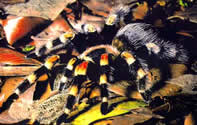 |
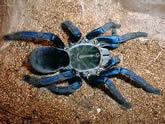 |
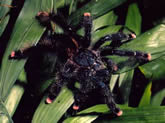 |
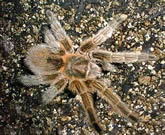 |
| Spider 1 | Spider 2 | Spider 3 | Spider 4 |
Spider
5 |
Spider
6 |
Each team will learn about one tarantula (do more if you like, of course).
You will
make and label two pictures.
One
picture will show what the tarantula looks
like (in full color). Include
1. a picture showing details of the tarantula (label all its parts), and
2. words giving both the common and scientific names of the spider.
One
picture will show
1. a cage that will keep the tarantula safe (in full color),
2. the food and moisture the tarantula needs, and
3. labels for things in the cage.
A short paragraph telling
information to help
us care for the tarantula.
Answer
these questions: 1. Does this tarantula need places to climb?
Why?
2. What does the tarantula eat?
3. What
should we do when it molts?
Each
person on the team will draw his/her own picture and write his/her own paragraph.
|
|
 Return
to Top Return
to Top |
|
|
 Return
to Top Return
to Top |
|
|
 Return
to Top Return
to Top |
|
|
 Return
to Top Return
to Top |
|
|
 Return
to Top Return
to Top |
|
|
 Return
to Top Return
to Top |
All arachnologists
will think about this problem and find a solution.
Some
people are afraid of tarantulas. Why do think this is so? Think of how
you would make a tarantula so it would be less scary. Show your tarantula
with an illustration or a model. Write about the way you made it different
from a real tarantula.
 |
See
a slide show of a There are 24 images of this spider named Don. |
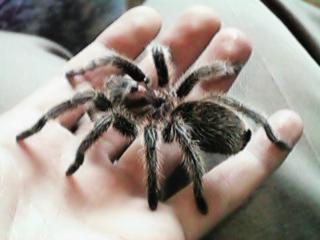 |
How
large is an adult Chilean Rose? See some pictures of a
|
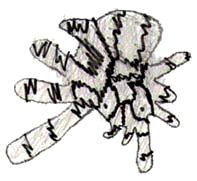
|
Read
this |
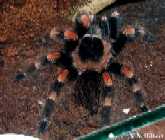
|
There
are many |

|
When
a tarantula grows bigger, it molts,
or sheds its skin. It starts by lying on its back and when it is done,
it is a bigger tarantula. |
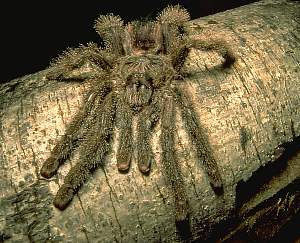 |
Go
to this site to learn about |
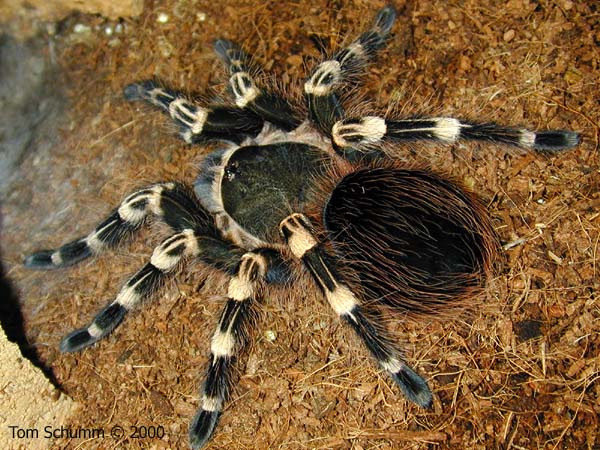 |
There
are many different |
 |
Have
fun playing a |
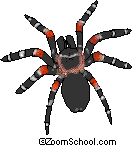 |
Link
to Enchanted Learning to |
 |
Link
to Enchanted Learning to find directions for making this |
 |
Read
the recipe for |
Even more
Sites! Click
on pictures or
underlined words to connect to links.
 |
There
are many |
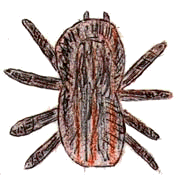
picture by Lacey |
This
shows |
 |
These |
 |
Go
to this site to learn about |
 |
| Return to Top |
You have learned about six tarantulas. You know what they look like, what environment they need, what they eat, and how to protect them. Do you feel the same about spiders as you did before your study?
How do
you feel about having a tarantula as a class display animal? How do you feel
about Sheila and Bubbles?
 |
| Return to Top |
Rubric
| My spider
picture is colorful and is my best work. (10 points)
My spider picture is not colorful and is not my best work. (5 point) |
_____
|
| My spider
picture has the common name and the scientific name. (5 points)
My spider picture is missing the common name or the scientific name. (2 point) |
_____
|
| My cage
picture is colorful and has labels. (10 points)
My cage picture is not colorful or does not have labels. (5 point) |
_____
|
| My paragraph
makes sense and details how to best care for my tarantula. (20 points)
My paragraph is not very detailed or it has many errors (spelling, grammar or factual). (10 points) My paragraph does not make sense. (5 point) |
_____
|
 |
| Return to Top |